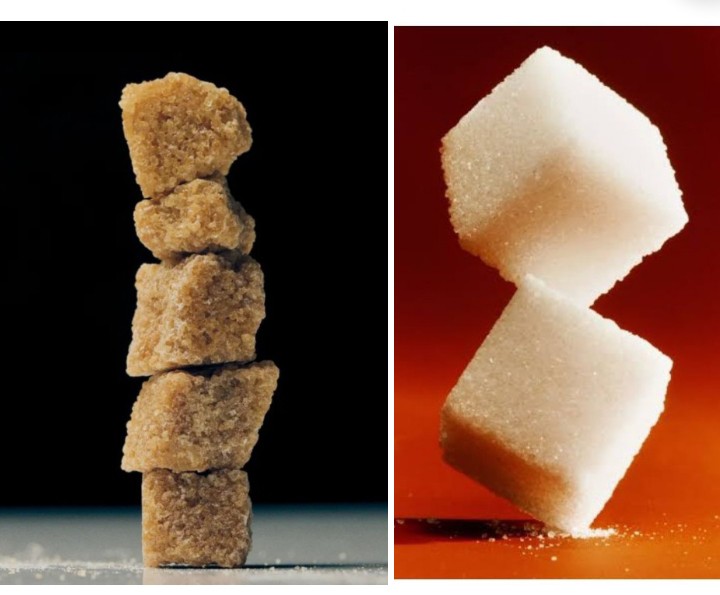By Maimunat Abdullahi

It’s hard to imagine a life without sugar. But how much sugar is too much? The American Heart Association recommends that women eat no more than six teaspoons of sugar a day; for men, no more than nine. This means no more than 25-36 grams or about 100-150 calories a day of sugar. The World Health Organization (WHO) recommends eating a maximum of 50 grams, but preferably no more than 25 grams of sugar per day.
Does that sound like a lot or a little? Well, when you consider that a 12 oz can of regular Coke has 39 grams of sugar, and even “healthy” foods like a granola bar (8 grams of sugar) and a container of blueberry greek yogurt (14 grams of sugar), are packed with hidden sugar, it certainly puts things in perspective. Most of us consume at least twice as much sugar as the recommendations allow.
Basically, most of the sugar we consume isn’t even intentional. It is hidden in sweets, cakes, and juice, as well as a lot of processed foods. And, it is not always easily recognized in ingredient lists.
HIDDEN SUGAR
Sugar often appears in lists of ingredients under many different names. This makes it difficult to recognize the actual sugar content of a product. Some common terms under which sugar can appear in foods include:
- Sucrose: the chemical term for table sugar.
- Glucose, glucose syrup, or dextrose: often found in processed foods.
- Fructose: fruit sugar, often found in fruit or corn syrup.
- Corn syrup (high-fructose corn syrup): highly processed sugar syrup used in many soft drinks.
- Maltose: malt sugar, often found in bread and beer.
- Dextrose: another form of glucose.
- Lactose: milk sugar found in dairy products.
- Invert sugar: a sugar that results from the breakdown of sucrose and is found in many confectionery products.
- Honey: often perceived as “natural”—but it is a form of sugar.
- Agave syrup, maple syrup or rice syrup: alternative sweeteners that also contain sugar.
To summarize: anything ending in “-ose”, as well as “syrups” and “sweeteners” are almost always sugar.
SIGNS YOU ARE EATING TOO MUCH SUGAR
With all this sneakiness, it can be tough to recognize that your sugar consumption is getting out of hand. We put this question to Dr. Lela Ahlemann, a specialist in dermatology, phlebology, proctology, and nutritional medicine. Here are the possible warning signs you are eating too much sugar.
1. Weight gain and constant hunger
It’s no secret that sugar has a lot of calories. But there is another reason why sugar makes us gain weight so quickly: “If you eat too much sugar, you are constantly hungry,” says Ahlemann. “The reason for this is that sugar drives up blood glucose levels in the short term, but has no lasting satiating effect due to the lack of fiber. The persistent hunger and the resulting continued eating ultimately lead to weight gain, which we are all aware of as a sign of too much sugar.”
2. Acne
“When we eat sugar, not only does the insulin level rise, but also a hormone in the blood called insulin-like growth factor 1, or IGF-1 for short,” says Ahlemann. “Together with insulin, this IGF-1 stimulates the sebaceous glands and excessive keratinization in the area of the sebaceous glands, which is why they become clogged leading to pimples and inflammation.”
3. Cravings and mood swings
“The high increase in glucose levels in the blood leads to an insulin release —but this is often so strong that the blood sugar is not lowered to the normal level, but below the ‘baseline’, so that you have a relative hypoglycemia, and this leads to cravings. In some people, it also leads to mood swings and crankiness,” says Ahlemann.
4. Inflammation and weak immune system
“Normally, sugar is absorbed by the body via the small intestine. However, if the amount of simple sugars such as glucose and fructose that we consume exceeds the capacity of our small intestine, this simple sugar ends up in the large intestine,” explains Ahlemann.
According to the nutrition expert, it becomes food for bacteria that belong in the large intestine: “Selective feeding leads to a proliferation of these bacteria. The problem is that, unfortunately, they carry endotoxins on their bacterial surface. These are so-called lipopolysaccharides. These endotoxins can then leave the gut, enter the bloodstream and lead to silent inflammation, which accelerates the aging of the body, and weakens the immune system.”
5. Accelerated aging
“It is scientifically proven that the high intake of sugars leads to the formation of so-called AGEs or Advanced Glycation End Products,” Ahlemann explains. She compares the effect to caramelization: “In our collagen, the fibers should ideally run in parallel; when the tissue is saccharified, there are cross-links in the collagen connective tissue, which makes it stiff, brittle, easier to degenerate and—very importantly—the body is also less able to repair itself. This means that the quality of our collagen deteriorates.”









